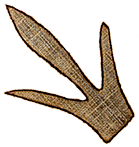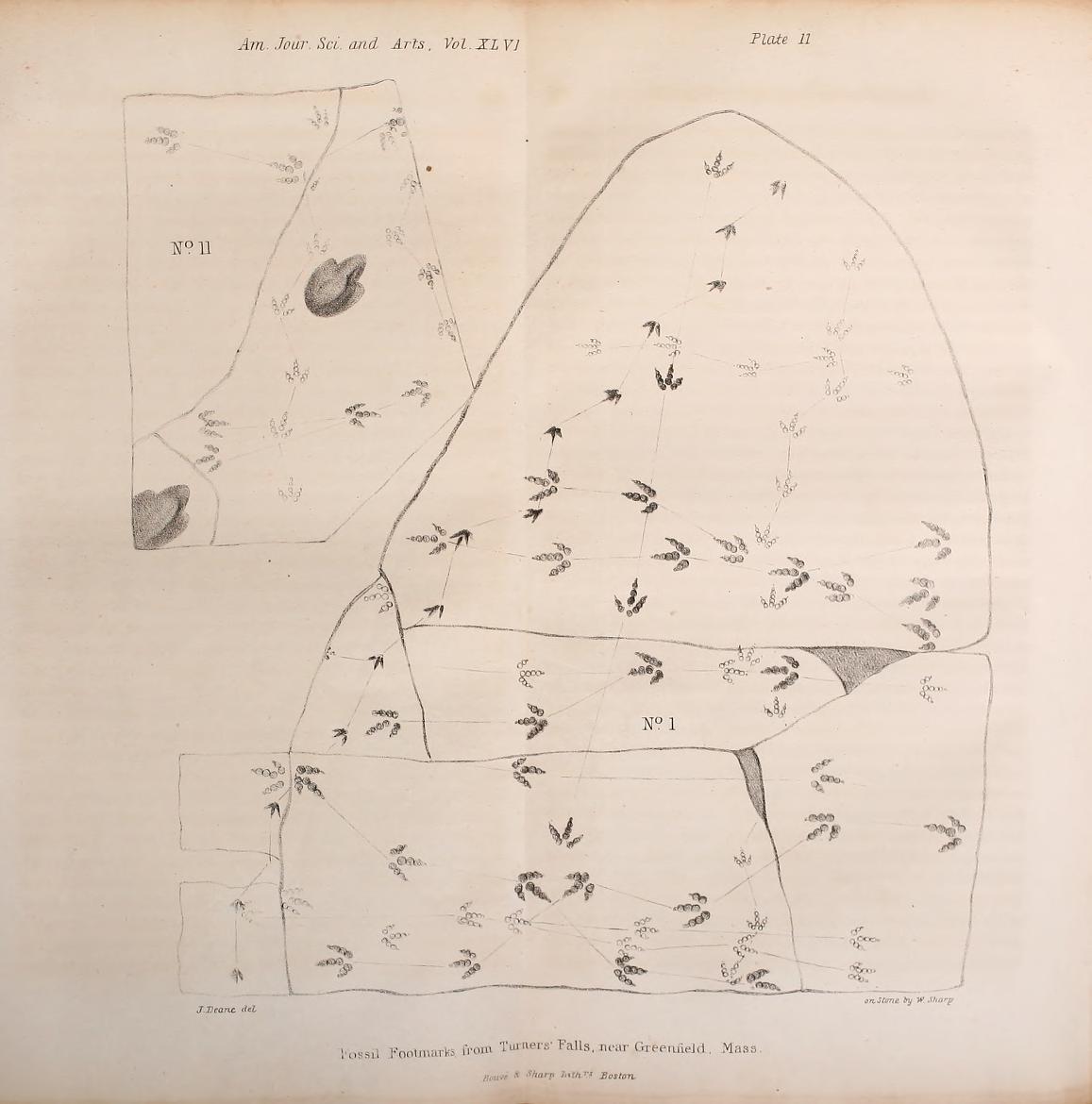 MENU
MENU
 MENU
MENU

A diagram similar to the type that James Deane created to convince Gideon Mantell that the tracks were made by birds. Image courtesy of Amherst College Archives and Special Collections.
Later the same year, in September of 1842, Silliman asked Deane to send plaster casts to Gideon Mantell in England. It seems that Deane also sent a "small but very fine" selection of footprints. This did not convince Mantell that the marks had been made by birds, so Deane sent more, this time with a diagram showing how to put the separate tracks into the pattern in which they were found in the ground. The specimens and diagram were accompanied by a long letter describing his observations and ideas on track formation.
The impact of seeing how the footprints formed the pattern of a walking bird convinced Mantell. Now persuaded that the impressions had been made by walking birds, Mantell presented Deane’s letter and casts at the next meeting of the prestigious Geological Society of London. He won over the doubters at the Society, but not only because of Deane's letter. Charles Lyell was back from America and could vouch for Hitchcock’s opinion that the marks were bird footprints, too.
Fortuitously, at the same meeting, the influential paleontologist Richard Owen announced the discovery in New Zealand of the enormous skeleton of a recently extinct bird he named the Dinornis (“terrible bird” — Owen had just the previous year coined the name dinosaur, “terrible lizard”). Geological Society members saw that Dinornis might be a clue to the fossil footprints: if such extremely large birds had died out a few centuries ago in New Zealand, then other extremely large birds could have lived an even longer time ago and also gone extinct, leaving behind their three-toed footprints.
In the story of the fossil bird tracks, it was a momentous occasion. In his official citation of thanks, the Society’s president, Roderick Murchison, called Deane the “discoverer” of the footprints and praised Hitchcock for his courage as their “first interpreter.” Deane’s letter to Mantell, Mantell’s reply, and Murchison’s letter of thanks on behalf of the Society were published in the Spring 1843 issue of the American Journal of Science.
Hitchcock wondered why the geologists in London were so focused on Deane's recent specimens. He himself had sent footprint specimens to William Buckland at the British Museum in 1836. Since the earliest specimens were from him, why didn't Murchison call Hitchcock the discoverer?